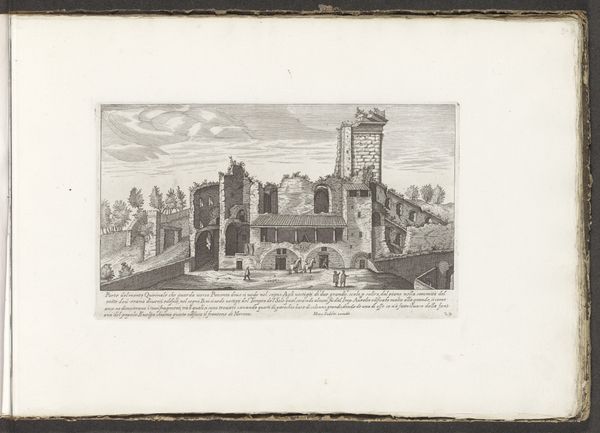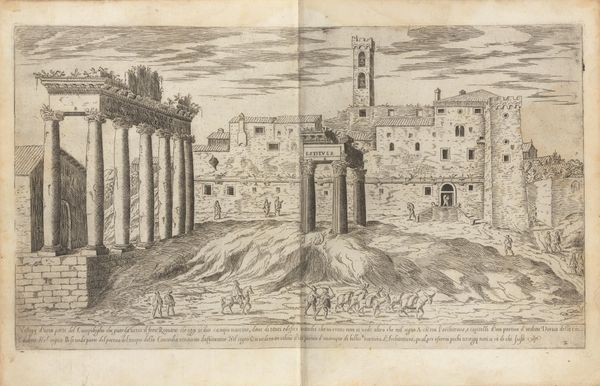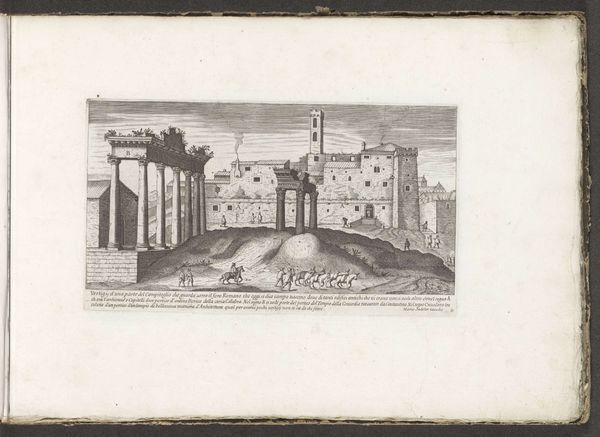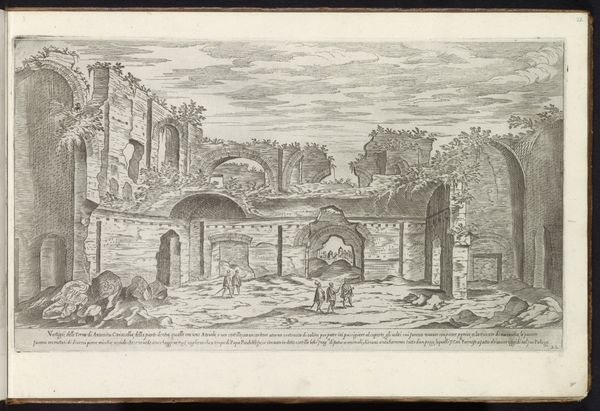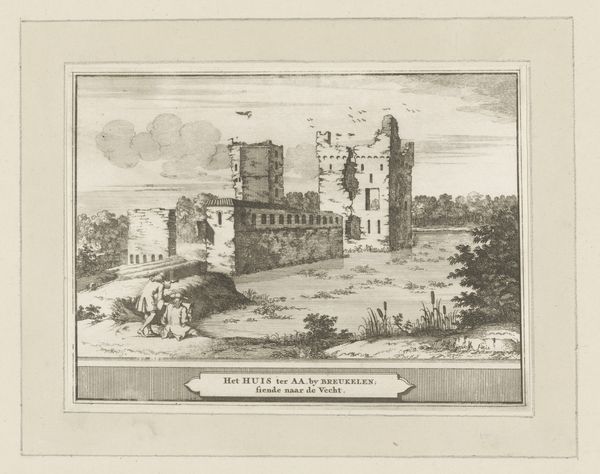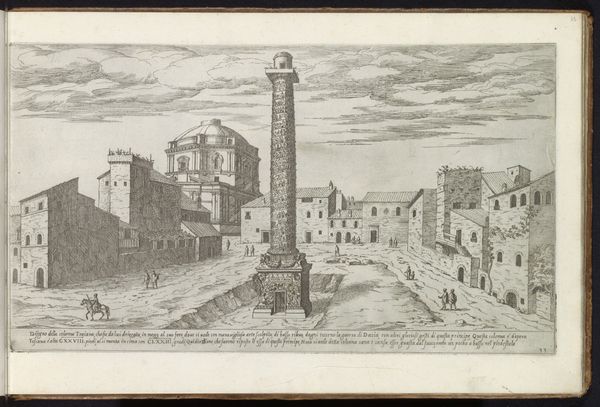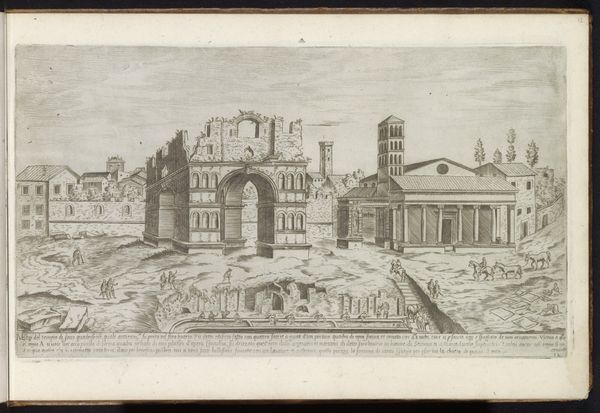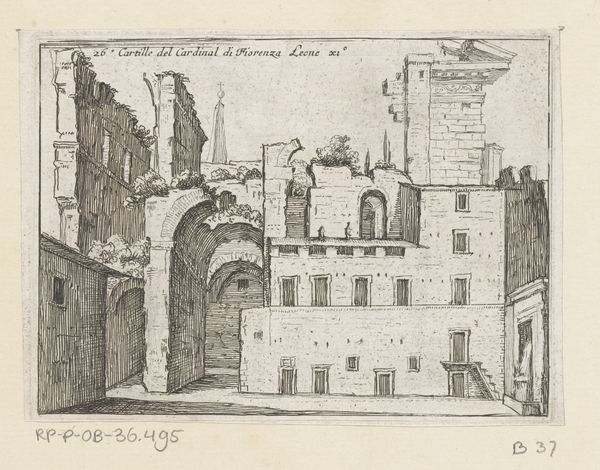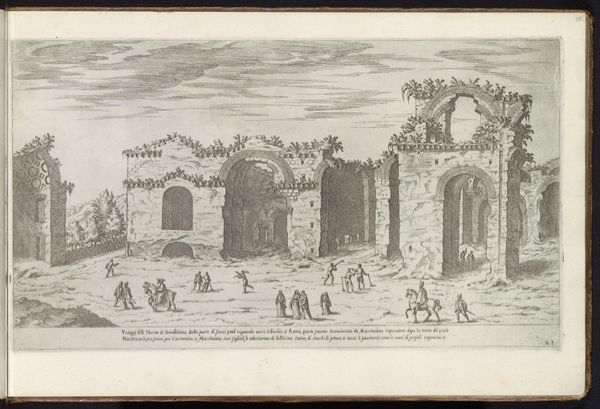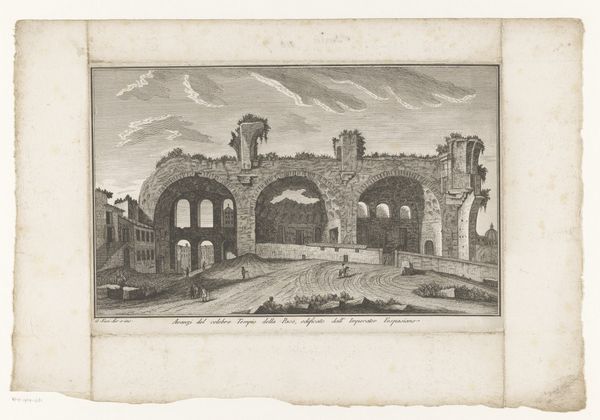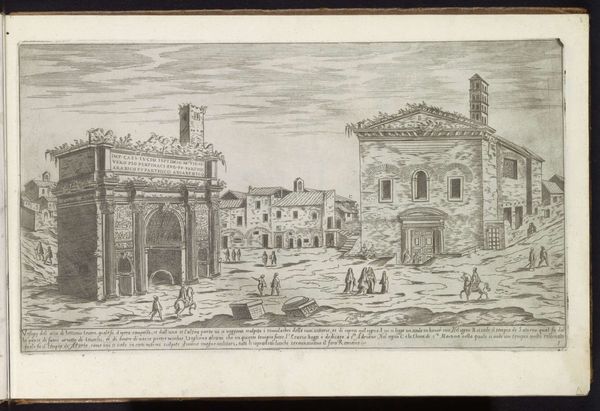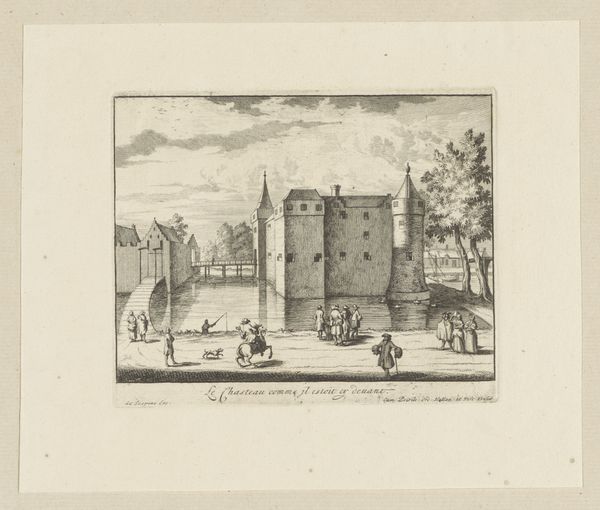
drawing, print, etching, engraving
#
drawing
#
ink drawing
# print
#
etching
#
landscape
#
etching
#
mannerism
#
cityscape
#
history-painting
#
engraving
Dimensions: height 215 mm, width 381 mm
Copyright: Rijks Museum: Open Domain
Étienne Dupérac created this etching of Roman ruins on the Quirinal Hill sometime in the latter half of the 16th century. This was a period when printed images were becoming central to how Europeans understood their relationship to the classical past. Dupérac’s print invites us to contemplate not just the grandeur of ancient Rome but also the shifting social and political forces that shape our perception of history. Consider how the crumbling architecture contrasts with the figures in contemporary dress who populate the scene. What does it mean to insert these everyday people into a landscape of broken monuments? Is this an elegy for a lost civilization, or a celebration of the present? To delve deeper, we might explore the archives of architectural drawings and travelogues from the period, tracing how artists and scholars constructed an idea of Rome that was at once historical and imaginatively compelling. Approaching art in this way reminds us that its meaning is always caught up in the particularities of its time.
Comments
No comments
Be the first to comment and join the conversation on the ultimate creative platform.
